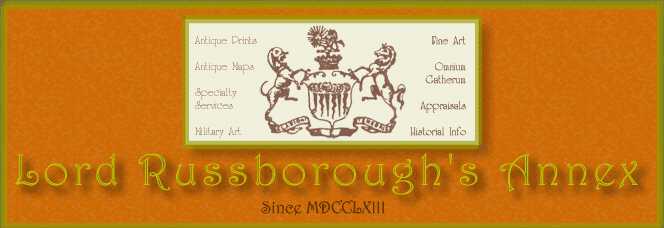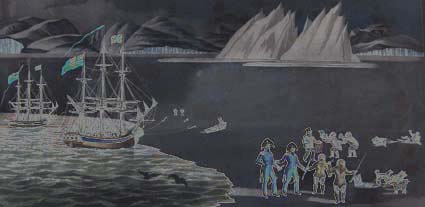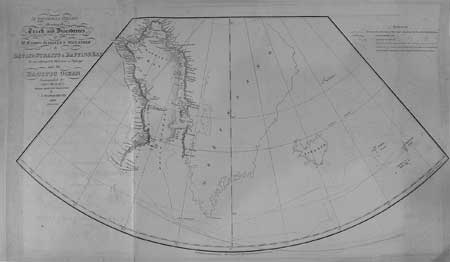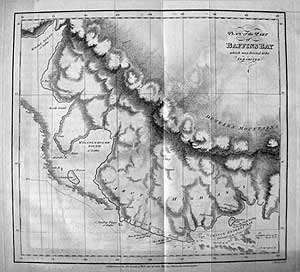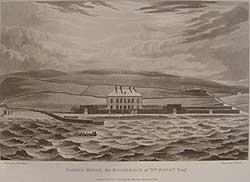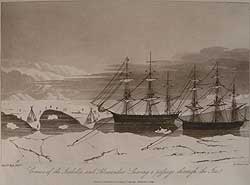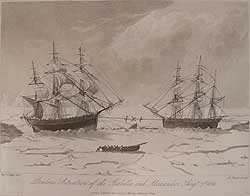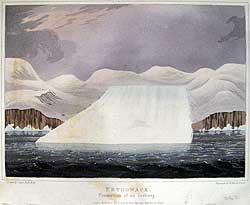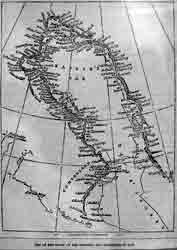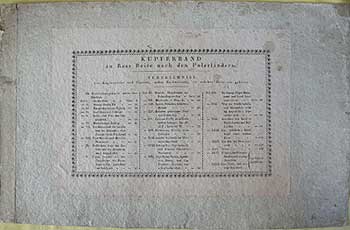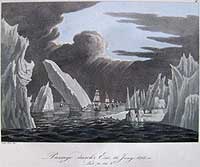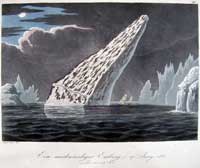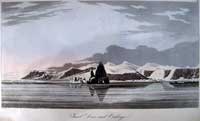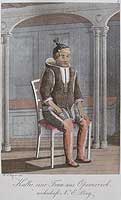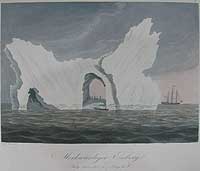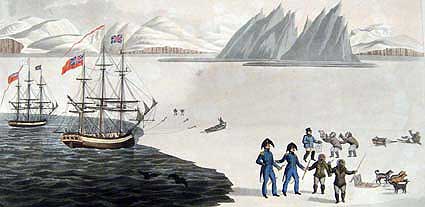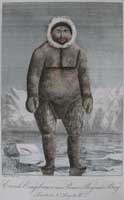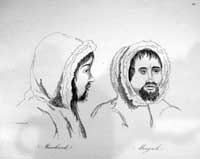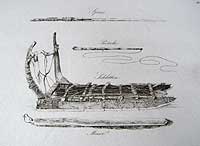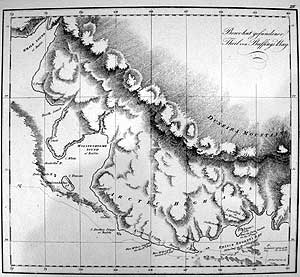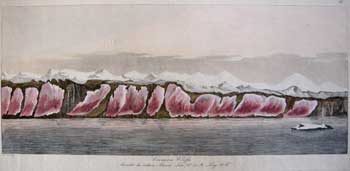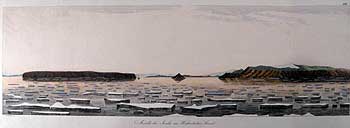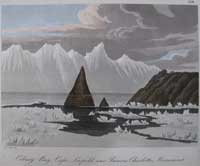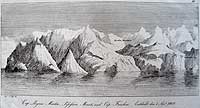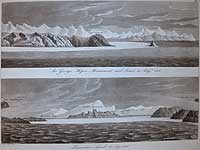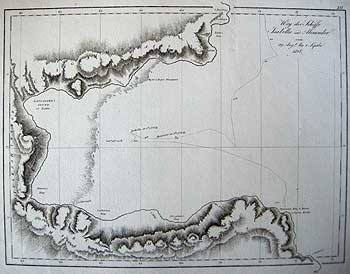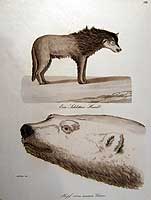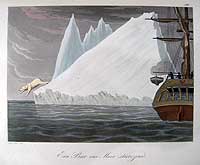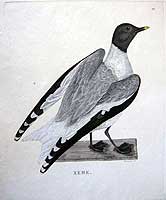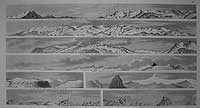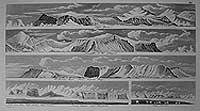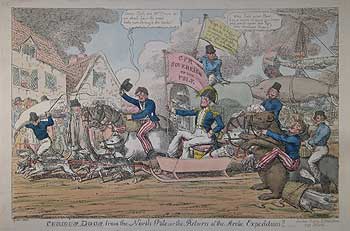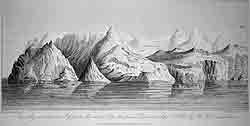
CAPE BYAM MARTIN, POSSESSION MOUNT AND CAPE FANSHAWE DISCOVERED SEPT. 1, 1818 BY HMS ISABELLA.
Daniel Havell after John Ross. Original grey tint aquatint. 5 x 9 3/4" (12.5 x 24.6 cm) Ref. LRA arc 152/al/r.dosv> DNN
This scene of brilliant white, towering conical mountains met Ross's gaze at the southern entrance to Lancaster sound. The awe-inspiring sight is reflected in the crystal clear water, then untravelled by known European explorers. Thirty miles further along, with fog rolling in, Ross without explanation, abruptly turned about and set sail for England. Admiral Sir Thomas Byam Martin, GCB. (25 July 1773 – 25 October 1854) was Comptroller of the Royal Navy. Published as plate #19 in the above work.
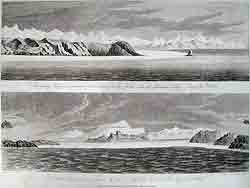
SIR GEORGE HOPE’S MONUMENT AND LAND, ON THE NORTH SIDE OF LANCASTER BAY AUG'T 30th. 1818
together with
LANCASTER SOUND, AS SEEN FROM HMS. ISABELLA AT 3 PM AUG'T 31st 1818
Daniel Havell after John Ross. Original grey tint aquatints. Each 3 1/2 x 9 3/4" (9 x 24.8 cm) Ref. LRA arc151/al/r.dosv> ANN
Shown in the lower panorama are the controversial Croker mountains which Ross alleged blocked westward passage from the sound. This was, in fact, the eastern entrance to the Northwest Passage.
“At half past two, (when I went off deck to dinner), there were some hopes of its clearing, and I left orders to be called on the appearance of land or ice a-head. At three, the officer of the watch, who was relieved to his dinner by Mr. Lewis, reported, on his coming into the cabin, that there was some appearance of its clearing at the bottom of the bay; I immediately, therefore, went on deck, and soon after it completely cleared for about ten minutes, and I distinctly saw the land, round the bottom of the bay, forming a connected chain of mountains with those which extended along the north and south sides. This land appeared to be at the distance of eight leagues; and Mr. Lewis, the master, and James Haig, leading man, being sent for, they took its bearings, which were inserted in the log; the water on the surface was at temperature of 34. At this moment, I also saw a continuity of ice, at the distance of seven miles, extending from one side of the bay to the other, between the nearest cape to the north, which I named after Sir George Warrender, and that to the south, which was named after Viscount Castlereagh. The mountains, which occupied the centre, in a north and south direction, were named Croker's Mountains, after the Secretary to the Admiralty. The southwest corner, which formed a spacious bay, completely occupied by ice, was named Barrow's Bay, and is bounded on the south by Cape Castlereagh, and on the north by Cape Rosamond, which is a head-land, that projects eastward from the high land in the centre. The north corner, which was the last I had made out, was a deep inlet; and as it answered exactly to the latitude given by Baffin of Lancaster Sound, I have no doubt that it was the same, and consider it a most remarkable instance of the accuracy of that able navigator. [Ross, pp. 174-175.]

